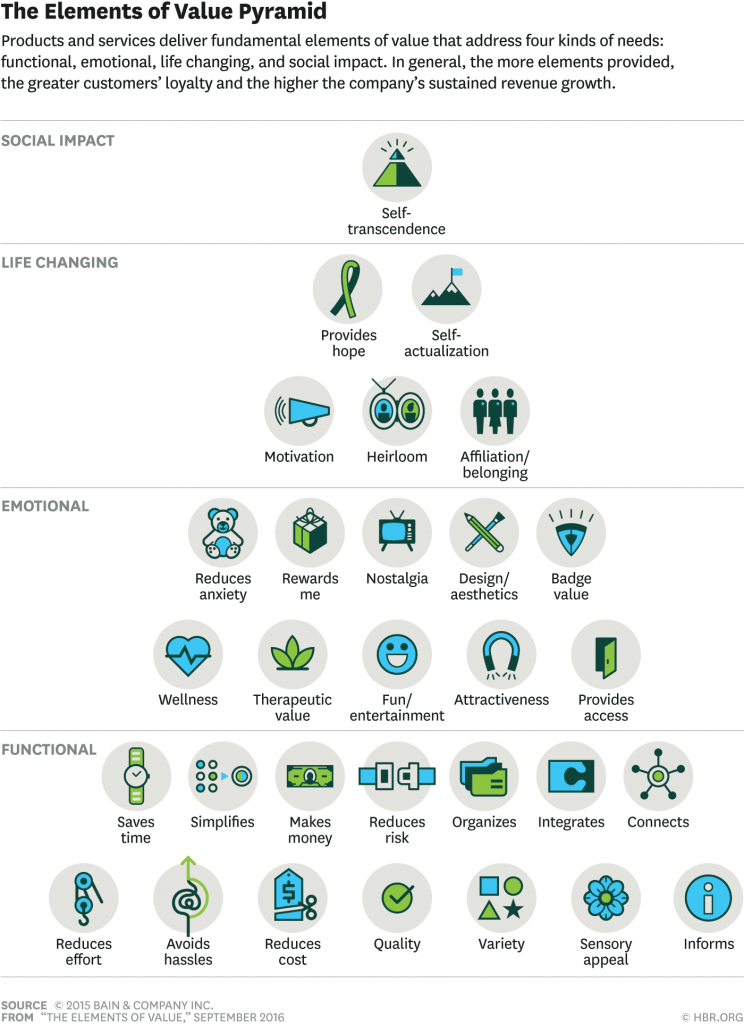Tool: How to create your organizations WHY
By Erik Korsvik Østergaard, 31. May 2016
Our mission and purpose is … what?
The past few weeks I’ve both seen some presentations on how to find your organizations WHY and purpose, and I have been part of such process myself in an organization.
Here’s one of my tools for creating your organizations WHY, based on +50 workshops in organizations and teams over the last years.
Step 1: Understand why you need a WHY
Get acquainted with the philosophy and psychology behind having a purpose. Here are some good places to start:
- You can (must!) study Simon Sinek’s Golden Circle and the book “Start With Why”. You can have a fast run-through of it in his TED talk
- Daniel Pink’s “DRIVE – the surprising truth about what motivates people”
- “UNBOSS” by Kolind and Bøtter
- You can read the many articles, e.g. The Imperative Index 2015, or KRIFA’s annual report on happiness at work (in Danish)
- “Why Storytelling Will Be the Biggest Business Skill of the Next 5 Years” by Shane Snow
- Or – if you want financial argumentation – read this by Financial Times: “Companies with a purpose beyond profit tend to make more money”
Source: Simon Sinek via Forbes
Also, you must understand, that finding the purpose can be a cumbersome and long-lasting process, that even can take months or years to nail perfectly. And you should be ready for adjusting it over time.
And, we’re not discussing your personal WHY, which is a similar but slightly different approach. I’ve taken Simon Sinek’s online course on this in order to teach others how to do it, but it’s not in scope for this blog post.
This process has turned out to work in 9 of 10 cases, but might still need adjustment to fit your context.
Step 2: Setup a 3 hour workshop
- Watch the Simon Sinek TED Talk video together. Debate if afterwards.
- Debate what your organization really(!) does. Answer these questions:
- What problem are you solving?
- For whom?
- What benefit do they get from us?
- Remember: A good WHY is unselfish, and underlines that what we do is to the benefit of somebody else.
- Find examples of actions and projects you have executed, that is in line with the purpose. Good examples makes it easier for people to connect with. Storytelling is a huge part of the emotional message, you are conveying.
- Work in pairs and debate the WHY and try to come up with a good phrase that captures it. You might need to include HOWs and WHATs, if relevant to either clear your head or understand your WHY
- Work in groups of six-ten to show’n’tell your ideas. Inspect and adapt.
- Finally, a mutual show’n’tell and debate until you are done. The specific choice of words is important here. It’s all about feelings.
Use the checklist below for what a good WHY is.
I have experienced people get goosebumps when the right phrase for the purpose is on the whiteboard.
Step 3: Let it sink in, then adjust it if needed
A good WHY might have to grow on you and might need adjustment.
Get some feedback on the WHY. Test it. What feeling do you have, when you tell others about the WHY? Does it feel great? And how do they respond to it?
If adjustments are needed, then apply them.
Inspect and adapt.
Step 4: Activate the WHY
You need to activate the WHY
- Present it properly. Storytelling and visuals are key to the communication.
- If it feels right, it is right
- Use the WHY in presentations
- Use the WHY for framing your activities, both HOW and WHAT
- Use the WHY for creating motivation and a movement
- And most of all, use the WHY actively in decision making, when engaging people, when committing to deals, and when prioritizing tasks
Step 5: Use the WHY actively
Let me repeat the last bullet in step 4:
- Use the WHY actively
- in decision making
- when engaging people
- when committing to deals
- when prioritizing tasks
- etc
- Use the WHY actively
- Use the WHY actively
Words without actions are dead words.
The checklist for a good why
 The Expert level
The Expert level
A great WHY ensures, that we work to solve the “Global Grand Challenges” as described by Singularity University: Food. Education. Water. Security. Global Health. Energy. Environment. Poverty. Space.
A great WHY ensures, that we work to reach The 17 Sustainable Goals as described by the UN.
Looking for a thought-provoking speaker
with knowledge of the future
and how to turn it into daily life?
Our newsletter is filled with articles and tools
for the modern
future-oriented leader
Get free, useful tips and tools
that will help you navigate the future
and enhance your leadership already today








